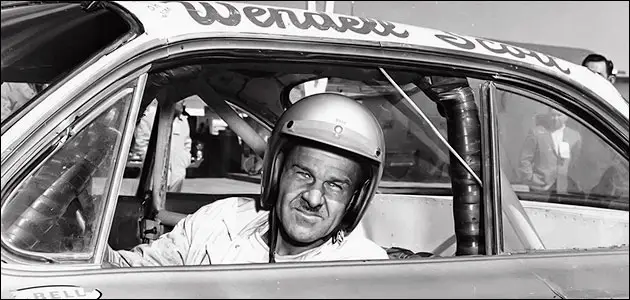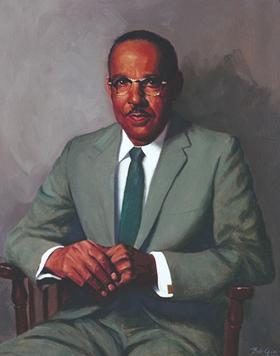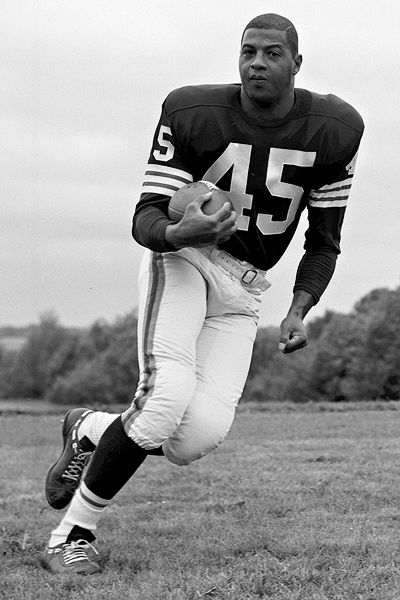Thank you for following COMAEANEWS throughout this month. To wrap it all up, here is a short video discussing the importance and why we celebrate black history. Did you have a favorite post from COMAEA this month? If so, please let us know. We hope that this will led to more dialogue relating to cultural enlightenment. Thank you and remember.....
WE ARE BECAUSE THEY WERE!
Saturday, February 28, 2015
Friday, February 27, 2015
Malcolm and Martin - #BlackHistoryFact

King's use of nonviolent civil disobedience and Malcolm's "by any means necessary" stance were in direct contrast to each other. So for many, photos from that date represent both the yin and yang of the black community.
Malcolm X was assassinated before the two would ever be able to meet again. Three years after Malcolm X's assassination, King would also be assassinated. Both men were 39 years of age at the time of their deaths.
Thursday, February 26, 2015
Harriet Tubman - Black History
Harriet Tubman became famous as a “conductor” on the Underground Railroad during the turbulent 1850s. Born a slave on Maryland’s eastern shore, she endured the harsh existence of a field hand, including brutal beatings. In 1849 she fled slavery, leaving her husband and family behind in order to escape. Despite a bounty on her head, she returned to the South at least 19 times to lead her family and hundreds of other slaves to freedom via the Underground Railroad. Tubman also served as a scout, spy and nurse during the Civil War.
{Source}
{Source}
Wednesday, February 25, 2015
Black History Month at the County of Marin
The County of Marin African-American Employee Association (COMAEA) continues to celebrate Black History Month. As we come near a close to this month, we wanted to share with you a video recorded by COMAEA where we got the opportunity to a meet with Marin County's Board of Supervisors and discuss the importance of black history. Check out the video below.
Lift Every Voice and Sing - Black History
"Lift Every Voice and Sing" often referred to as the "Black National Anthem" is a song that was written as a poem by James Weldon Johnson. His brother, John Rosamond Johnson, would later set the poem to music. In 1919, the National Association for the Advancement of Colored People (NAACP) dubbed it "The Negro National Anthem" for its power in voicing the cry for liberation and affirmation for African American people.
Lift every voice and sing
Till earth and heaven ring,
Ring with the harmonies of Liberty;
Let our rejoicing rise
High as the listening skies,
Let it resound loud as the rolling sea.
Sing a song full of the faith that the dark past has taught us,
Sing a song full of the hope that the present has brought us,
Facing the rising sun of our new day begun
Let us march on till victory is won.
Stony the road we trod,
Bitter the chastening rod,
Felt in the days when hope unborn had died;
Yet with a steady beat,
Have not our weary feet
Come to the place for which our fathers sighed?
We have come over a way that with tears has been watered,
We have come, treading our path through the blood of the slaughtered,
Out from the gloomy past,
Till now we stand at last
Where the white gleam of our bright star is cast.
God of our weary years,
God of our silent tears,
Thou who has brought us thus far on the way;
Thou who has by Thy might Led us into the light,
Keep us forever in the path, we pray.
Lest our feet stray from the places, our God, where we met Thee,
Lest, our hearts drunk with the wine of the world, we forget Thee;
Shadowed beneath Thy hand,
May we forever stand.
True to our God,
True to our native land.
Tuesday, February 24, 2015
Wendell Scott - Black History
 Wendell Scott (August 29, 1921 – December 23, 1990) was an American stock car racer. Scott was a pioneer in the sport of auto racing as the first Black full-time driver on the NASCAR circuit. Acting as a driver and his own mechanic he gained the admiration of fans and fellow drivers through his grit and determination to be successful in a sport deeply-entrenched in the Jim Crow south. Wendell had a very light complexion and blue eyes and as such many white people did not realize that he was Black. He was not immune to the ill effects of racism, however. Despite his enthusiasm and skill, racing was not easy for Scott as he faced numerous obstacles. Fans derided him on almost every lap and white drivers often did everything they could to wreck him, knowing that in the era of Jim Crow, he wouldn’t dare retaliate. Many other drivers, however, came to respect Scott. They saw his skills as a mechanic and driver, and they liked his quiet, uncomplaining manner. They saw him as someone similar to themselves, another hard-working blue-collar guy swept up in the adrenalin rush of racing, not somebody trying to make a racial point. "He was a racer -- you could look at somebody and tell whether they were a racer or not," said driver Rodney Ligon. "Didn't nobody send him [to the track] to represent his race -- he come down because he wanted to drive a damn racecar." Some white drivers became his close friends and also occasionally acted as his bodyguards.
Wendell Scott (August 29, 1921 – December 23, 1990) was an American stock car racer. Scott was a pioneer in the sport of auto racing as the first Black full-time driver on the NASCAR circuit. Acting as a driver and his own mechanic he gained the admiration of fans and fellow drivers through his grit and determination to be successful in a sport deeply-entrenched in the Jim Crow south. Wendell had a very light complexion and blue eyes and as such many white people did not realize that he was Black. He was not immune to the ill effects of racism, however. Despite his enthusiasm and skill, racing was not easy for Scott as he faced numerous obstacles. Fans derided him on almost every lap and white drivers often did everything they could to wreck him, knowing that in the era of Jim Crow, he wouldn’t dare retaliate. Many other drivers, however, came to respect Scott. They saw his skills as a mechanic and driver, and they liked his quiet, uncomplaining manner. They saw him as someone similar to themselves, another hard-working blue-collar guy swept up in the adrenalin rush of racing, not somebody trying to make a racial point. "He was a racer -- you could look at somebody and tell whether they were a racer or not," said driver Rodney Ligon. "Didn't nobody send him [to the track] to represent his race -- he come down because he wanted to drive a damn racecar." Some white drivers became his close friends and also occasionally acted as his bodyguards.In April 2012, Scott was nominated for inclusion in the NASCAR Hall of Fame, and was selected for induction in the 2015 class, in May 2014. In January 2013, Scott was awarded his own historical marker in Danville, Virginia. The marker's statement reads “Persevering over prejudice and discrimination, Scott broke racial barriers in NASCAR, with a 13-year career that included 20 top five and 147 top ten finishes.”
Wendell was Inducted into the NASCAR Hall of Fame on January 30, 2015.
Monday, February 23, 2015
Comic Book Hero: Lobo - Black History
 Lobo, a western hero (he did not possess superpowers), is a former Union soldier who heads west after the Civil War. Upon being wrongfully accused of murder, Lobo sets out on a mission to fight injustice and to clear his name.
Lobo, a western hero (he did not possess superpowers), is a former Union soldier who heads west after the Civil War. Upon being wrongfully accused of murder, Lobo sets out on a mission to fight injustice and to clear his name.Lobo’s importance to comic history stems not only from being the first black comic hero to star in his own series, but also in that he is free from the racist stereotypes that plague other early black comic book characters. In fact, the comic doesn’t even make reference to the fact that Lobo is black.
 Unfortunately, racist attitudes would ensure that Lobo would be a very short-lived series. Although 200,000 copies of the first issue were printed, only about 10,000 – 15,000 copies were sold. This was largely due to many retailers refusing to carry a comic book about a black hero. What’s more, many of these retailers not only returned Lobo, but also every other comic shipped with it. The return of so many unopened shipments was a huge loss for Dell Comics and caused Lobo to be canceled after only two issues.
Unfortunately, racist attitudes would ensure that Lobo would be a very short-lived series. Although 200,000 copies of the first issue were printed, only about 10,000 – 15,000 copies were sold. This was largely due to many retailers refusing to carry a comic book about a black hero. What’s more, many of these retailers not only returned Lobo, but also every other comic shipped with it. The return of so many unopened shipments was a huge loss for Dell Comics and caused Lobo to be canceled after only two issues.Although the brief series was a financial disaster, a comic starring a non-stereotypical black hero was a huge milestone for people of color in comics.
article retrieved from [source]
Sunday, February 22, 2015
Civil Rights Act of 1964 - #BlackHistoryFact
In this short video from the History Channel, the significance of this legislation is discussed. The Civil Rights Act of 1964 outlawed discrimination based on race, color, religion, sex or national origin.
Saturday, February 21, 2015
Vivien Thomas

Vivien Theodore Thomas was an African American surgical technician who developed the techniques used to treat blue baby syndrome. He served as supervisor of the surgical laboratories at John Hopkins University in Baltimore, MD for 35 years. First, Thomas tested the techniques that would be used to treat blue baby syndrome on animals to make sure it would work. In 1944, Dr. Alan Blalock performed the first successful "blue baby" operation. Thomas advised Blalock through the operation.
In 1976, Johns Hopkins University presented Thomas with an honorary doctorate.[2] Because of certain restrictions, he received an Honorary Doctor of Laws, rather than a medical doctorate, but it did allow the staff and students of Johns Hopkins Hospital and Johns Hopkins School of Medicine to call him doctor. After having worked there for 37 years, Thomas was also finally appointed to the faculty of the School of Medicine as Instructor of Surgery.
Without any education past high school, Dr. Thomas rose above poverty and racism to become a cardiac surgery pioneer and a teacher of operative techniques to many of the country's most prominent surgeons. He was the first African American without a doctorate to perform open heart surgery on a white patient in the United States.
Friday, February 20, 2015
Cabell "Cab" Calloway III - Black History
.jpg)
Cabell "Cab" Calloway III was an African American entertainer. In 1930, Calloway got a gig at Harlem's famed Cotton Club and became a regular performed at the popular nightspot. Calloway made it big with his 1931 hit "Minnie the Moocher". The song's famous call-and-response "hi-de-hi-de-ho" became Calloway's signature phrase for the rest of his career. Calloway's song went to sell over 1 million copies. The song would later be inducted into the Grammy Hall of Fame in 1999. In 1993, President Bill Clinton presented Calloway with the National Medal of the Arts.
Below is a video of Cab performing his hit song.
Thursday, February 19, 2015
Harlem Renaissance - Black History
| artwork from the period of the Harlem Renaissance |
| Jazz Musicians of Harlem Renaissance |
While the renaissance did not achieve the sociopolitical transformation for which some had hoped, today it is clear that this movement marked a turning point in black cultural history; it helped to establish the authority of black writers and artists over the representation of black culture and experience, and it help those writers and artists carve their niche in western culture.
Wednesday, February 18, 2015
Ernest "Ernie" Davis - #BlackHistoryFact
| Davis with Heisman Trophy |
 |
| Ernie Davis in his Cleveland Browns Uniform |
Tuesday, February 17, 2015
Pt. 2 Garrett Morgan - Saving lives one invention at time. #BlackHistory
Part 2!
of Garrett Morgan! Garrett was the born to former slaves on March 4, 1877 in
Kentucky. Please check out Part 1 of Garrett Morgan to find more about his
other inventions.
While driving, Garrett witnessed a terrible car accident.
After, Garrett replayed the situation in his mind and realized that the roads
were dangerous. Garrett felt it was necessary to improve the current
conditions... He came up with an invention that would be beyond beneficial.
Garrett Morgan invented the automatic stop light.
Although manually operated traffic signals existed at most major intersections, they were not as effective because they switched back and forth to either 'stop' or 'go'.
Can you imagine the chaos they could cause. A light to say GO (Green Light)... and suddenly a light to say STOP (Red Light)! Garrett Morgan took it upon himself to create a warning light,
better known as the Yellow Light!
Check out his patent below!
This was a live saving idea/invention! Garrett went on to sell his
patent to General Electric for $ 40,000!
Thank you Garrett Morgan for all that you've done!
 |
| photo source |
Monday, February 16, 2015
Nancy Green aka Aunt Jemima - #BlackHistoryFact
 Miss Green was born into slavery in 1834. Nancy Green was a storyteller, cook, and one of the first black corporate models in the United States. Green was hired by the R.T. Davis Milling Company to represent "Aunt Jemima". Aunt Jemima was named after a song from a minstrel show that the owner of the R.T. Davis Milling Company attended and would resemble a mammy archetype. Green became the world's first living trademark. In 1893 the R.T. Davis Milling Company began an aggressive campaign that began with having Green demonstrate the pancake mix at an exposition in Chicago. Green's cooking skills and warm personality made her a hit at the exposition. She was the ideal "Aunt Jemima" and proclaimed the "Pancake Queen". Special policemen were assigned to her booth to keep the crowd moving. Green went on to tour the world promoting this pancake mix. Green signed a lifetime contract with R.T. Davis Milling Company and held her job until her death in 1923.
Miss Green was born into slavery in 1834. Nancy Green was a storyteller, cook, and one of the first black corporate models in the United States. Green was hired by the R.T. Davis Milling Company to represent "Aunt Jemima". Aunt Jemima was named after a song from a minstrel show that the owner of the R.T. Davis Milling Company attended and would resemble a mammy archetype. Green became the world's first living trademark. In 1893 the R.T. Davis Milling Company began an aggressive campaign that began with having Green demonstrate the pancake mix at an exposition in Chicago. Green's cooking skills and warm personality made her a hit at the exposition. She was the ideal "Aunt Jemima" and proclaimed the "Pancake Queen". Special policemen were assigned to her booth to keep the crowd moving. Green went on to tour the world promoting this pancake mix. Green signed a lifetime contract with R.T. Davis Milling Company and held her job until her death in 1923. Green was one of the organizers of the Olivet Baptist Church in Chicago. Her career as "Aunt Jemima" allowed the financial freedom to become an activist and engage in antipoverty programs.

With Green's help, flour sales soured during this period and people stopped looking at pancakes as just breakfast food.
Sunday, February 15, 2015
America the Story of Us: Frederick Douglass
Below is a short documentary on Frederick Douglass entitled "America the Story of Us: Frederick Douglass".
After the Civil War, Frederick Douglass fought for the rights of women and African Americans alike.
Subscribe to:
Posts (Atom)


